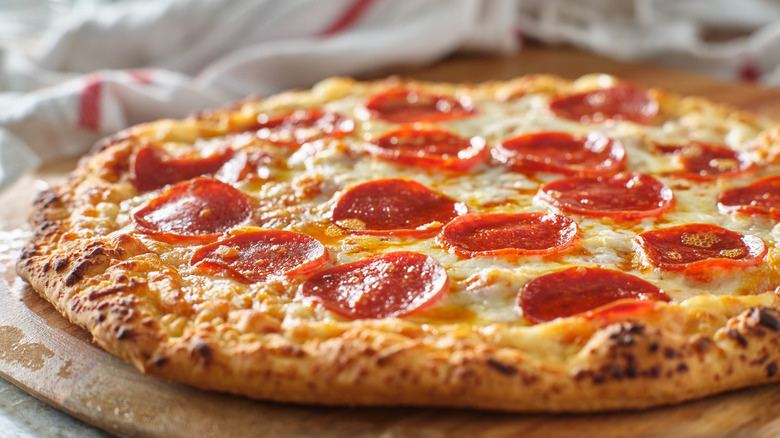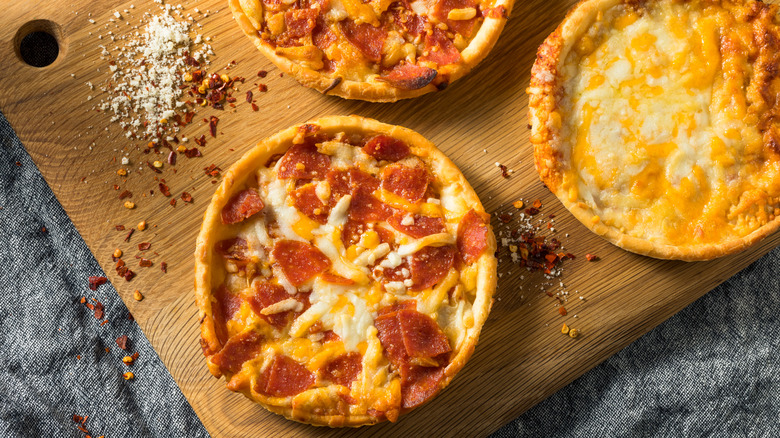How To Make Your Frozen Pizza Crust Pop With Flavor
Frozen pizza is a lifesaver on those nights when you aren't interested in cooking but don't want to spend the money on takeout. Though pizza has been around for centuries, it wasn't until 1950 that a man named Joseph Bucci filed the first frozen pizza patent. According to CNBC, from there, Totino's, a brand fans know today for its tasty, mouth-burning pizza rolls, started mass producing frozen pizzas, which launched the grocery store item into what we know it as today. These days, it's nearly impossible to come by a grocery store that doesn't sell the popular frozen treat.
Perhaps the biggest downside to frozen pizza is that it's often less satisfying than bringing home a freshly cooked version from a local pizza shop (sorry, DiGiorno, but we know it's not delivery). However, that doesn't mean there aren't ways to enhance its flavor. If you're looking for the best way to take this frozen meal up a notch, it all starts with the crust.
Season your pizza crust for added flavor
There's always been a debate about whether or not to eat the pizza crust — some people are avid crust fans, while others prefer to leave it on the plate. When it comes to frozen pizza, though, it's hard to disagree that the crust can often be tasteless. While the sauce, cheese, and toppings might taste similar to what you'd get at a true pizza shop, the crust almost always tastes like cardboard, unless it's one of the few varieties that are stuffed with cheese.
Professional chefs once revealed their best tips to upgrade frozen pizza, and when it comes to the crust, there's an easy fix: butter and seasonings. "I'd highly recommend using homemade garlic butter on frozen pizza," Max Hardy, owner of pizzerias Coop Detroit and Jed's Detroit, told Insider. "Drizzle the melted butter around the crust before or after baking." To take things further with flavor, add seasonings to the crust as well, such as sea salt, dried oregano, or garlic powder, and allow them to bake into the crust as it cooks. It's about as close to a true pizza place as you can get.
What to do — and what not to do — to upgrade your pizza
Buttered crust isn't the only way to make frozen pizza taste better. ManMadeDIY suggests poking holes in the crust's bottom before cooking it; this frees the steam, which helps keep the pizza crispy. Plus, rather than purchasing a pre-topped frozen pizza, you can buy a basic cheese pizza and add fresh pizza toppings.
There's one thing you shouldn't do, though: cook a frozen pizza on a pizza stone. While pizza stones are excellent for getting that perfectly cooked crust on a homemade pie, PureWow says that stones are susceptible to thermal shock. Placing a frozen pizza on a hot stone could induce this shock, causing the stone to break. Rather than risk it, simply ditch the baking sheet and cook the pizza directly on the oven rack. If you're worried about cheese or sauce melting onto the oven floor, keep the pizza on the tap rack and place a piece of aluminum foil on the rack below it to catch any drippings.


